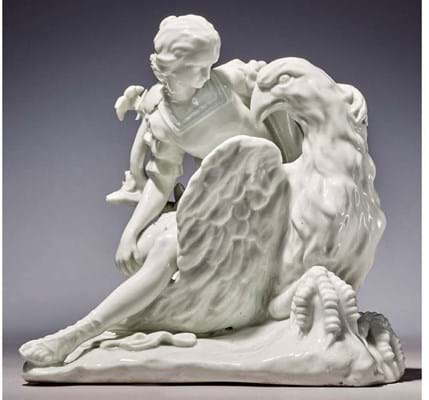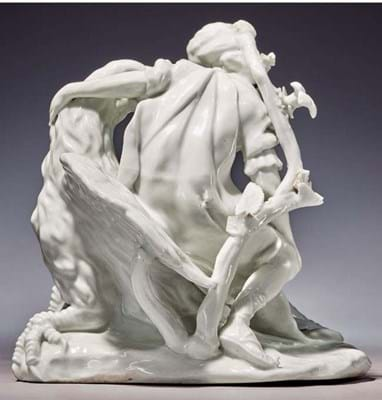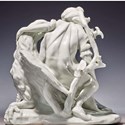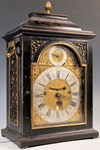Ganymede is modelled seated on the back of Zeus in the guise of the eagle, behind him a small branch issuing leaves and a flower.
Porcelain figures of this distinctive modelling were traditionally catalogued under the collective term ‘Girl-in-a-Swing’ after the well-known figure in the Victoria and Albert Museum.
Porcelain scholars had long suspected the group was linked to the French Huguenot and London jeweller Charles Gouyn – something finally confirmed in a 1993 paper by Bernard Dragesco.
Only seven surviving examples of this 6in (15cm) model – presumably made as a pair to the similar group Europa and the Bull – are known.
Of those, four are in museum collections (the V&A, Colonial Williamsburg, Metropolitan Museum of Art and National Museum of Ireland) while others have been sold at Christie’s in 1996 and Phillips in 1990.
This example, first sold at Christie’s in 1956 and again in 1986 as part of Rous Lench collection, was last on the market at Sotheby’s New York in 1996 as part of the collection of Margaret Davison Block.
At the Sotheby’s New York sale on October 23 titled Wedgwood and Beyond: English Ceramics from the Starr Collection, it was estimated at $20,000-30,000 but sold for $45,000/£34,600 (plus 25% buyer’s premium). The 256-lot Starr collection, which focused on Wedgwood earthenwares, was formed by the retail and real estate businessman Bernard Starr (1929- 2018) and his wife Lydia (1931-2009) who began collecting in the late 1960s.
Lydia in particular was interested in rare examples of early-18th century English porcelain.


















